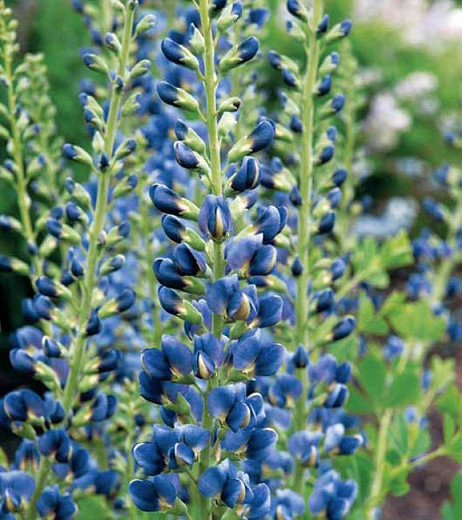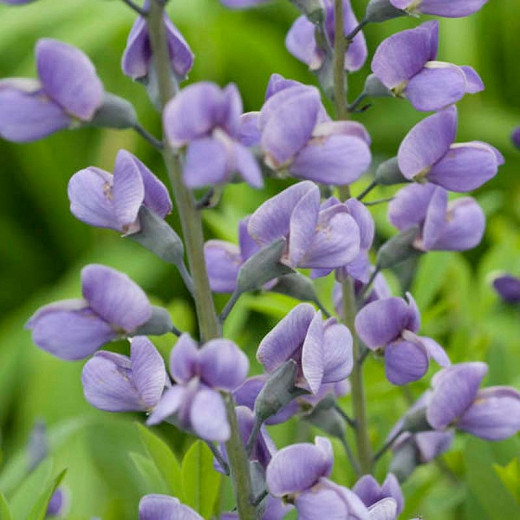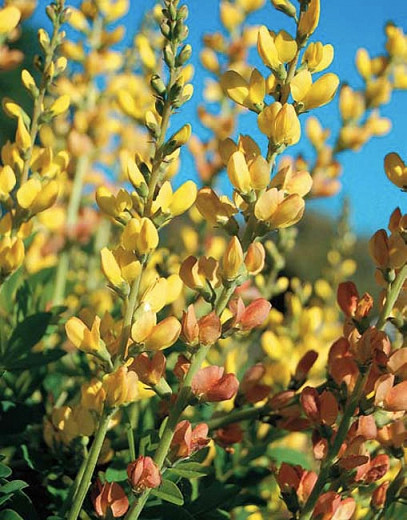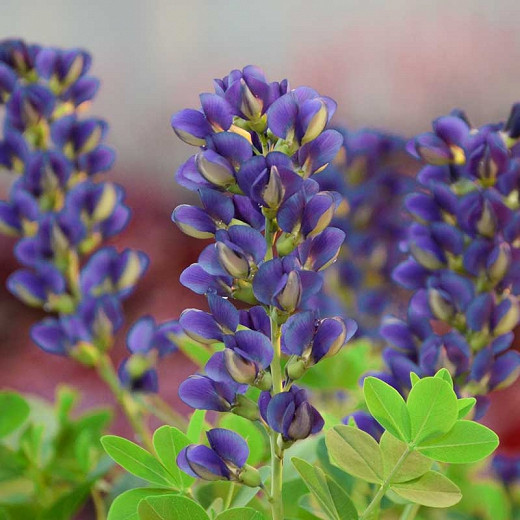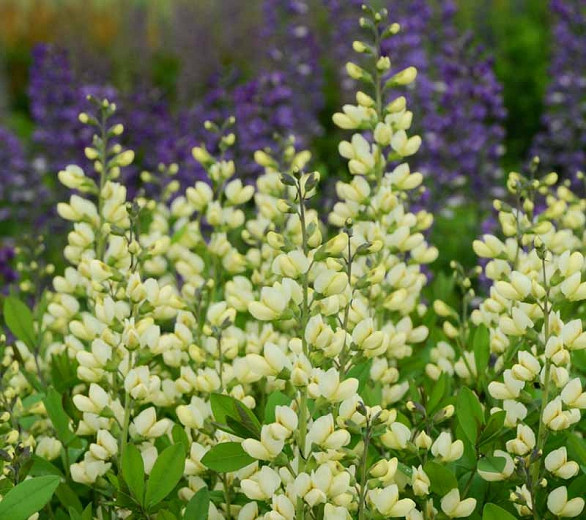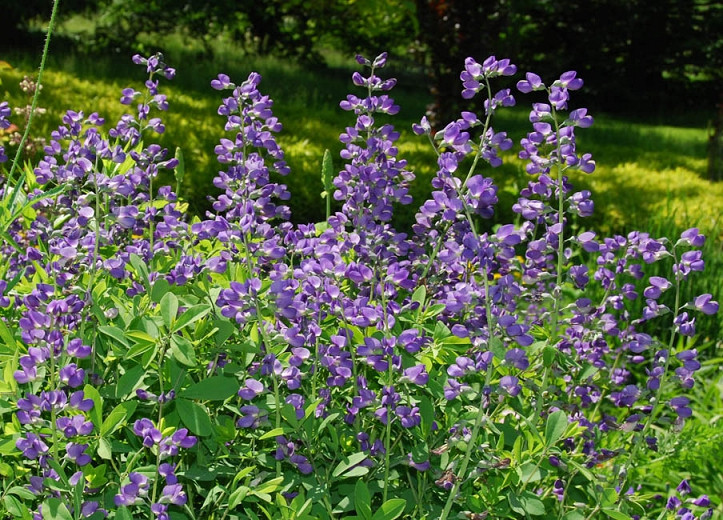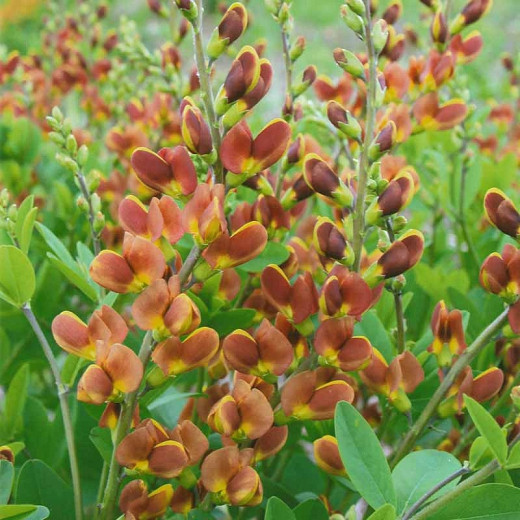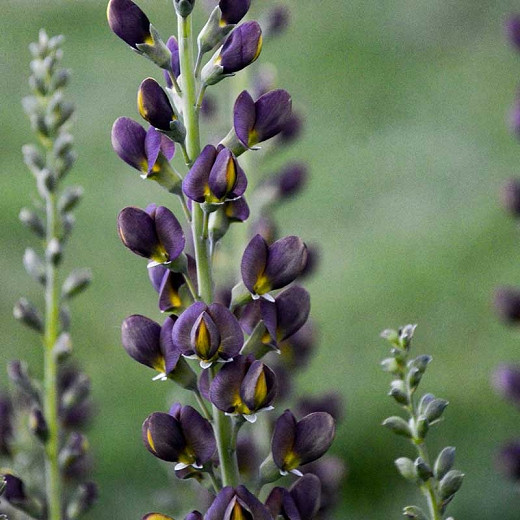Baptisia Midnight (False Indigo)
Noted for its long blooming season, Baptisia 'Midnight' is an upright perennial bearing a profusion of extremely long inflorescences, 24 in. (60 cm), bearing deep blue-violet flowers. Unlike most False Indigos, this plant has two bloom cycles within its blooming season. The first cycle produces long flower spikes up to 24 in. long in late spring. It is quickly followed by a second cycle, which produces blooms on secondary branches with inflorescences up to 5 in. long (12 cm), further extending its flowering season. Borne on gracefully arching branches, they last for up to 4 weeks and attract butterflies, bees, and hummingbirds. When the flowers fade away, the lovely blue-green foliage, which forms a beautiful broad, rounded shrub, remains neat all season and creates a lovely backdrop for the other perennials in the garden. If left untrimmed, the plant forms interesting seedpods turning charcoal-black in the fall and persisting into winter. Bred at the Chicago Botanic Garden, this hybrid Baptisia is vigorous, tough, long-lived, and enjoys a long season of interest.
- Blooming in late spring to early summer, it is an extremely valuable addition to the garden and its seedpods help create lovely winter decorations.
- Spreads by underground rhizomes and typically grows up to 4 ft. tall and wide (120 cm).
- Its requirements are fairly simple: Full sun in average, dry to medium, well-drained soils. Although it will grow in some shade, this plant tends to become leggy and may require staking. Tolerates poor soils and drought. Do not disturb once established as it develops a deep taproot that is easily damaged if you try to transplant it.
- Baptisia is rarely bothered by deer as they consider it unpalatable and is rabbit resistant
- Attracts scores of butterflies and hummingbirds
- Not susceptible to pest damage or disease
- Looks stunning in beds and borders, cottage gardens, prairies or meadows, and native plant gardens. Great as a specimen plant or in small groups.
- Propagate by seed sown in pots in a cold frame as soon as seed is ripe or propagate by division in early spring.
- Trimming foliage after bloom helps maintain a rounded plant appearance, but you will miss out on the attractive seed pods which are great to use in dried flower arrangements.
- If the seed pods are left over winter, they will produce little seedlings, but they are easy to pull out.
Requirements
| Hardiness | 4 – 9 |
|---|---|
| Heat Zones | 1 – 9 |
| Climate Zones | 1, 2, 3, 4, 5, 6, 7, 8, 9, 10, 11, 12, 13, 14, 15, 16, 17, 18, 19, 20, 21, 22, 23, 24 |
| Plant Type | Perennials |
| Plant Family | Baptisia – False Indigo |
| Exposure | Full Sun |
| Season of Interest | Spring (Late)Summer (Early) |
| Height | 3' – 4' (90cm – 120cm) |
| Spread | 3' – 4' (90cm – 120cm) |
| Spacing | 36″ – 48″ (90cm – 120cm) |
| Water Needs | Low, Average |
| Maintenance | Low |
| Soil Type | Loam, Sand |
| Soil pH | Acid, Neutral |
| Soil Drainage | Well-Drained |
| Characteristics | Dried Arrangements, Cut Flowers, Showy |
| Tolerance | Clay Soil, Drought, Rabbit, Dry Soil, Rocky Soil |
| Attracts | Bees, Butterflies, Hummingbirds |
| Garden Uses | Banks and Slopes, Beds and Borders |
| Garden Styles | Informal and Cottage, Prairie and Meadow |
